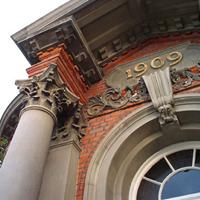Sesquicentenary of Gore

E nga mana, e nga reo, e nga iwi o te motu e huihui nei, tēnei aku mihi māhana ki a koutou. Kia ora tātou katoa. Distinguished guests, ladies and gentlemen, warm greetings to you all.
I specifically acknowledge: Your Worship Tracy Hicks, Mayor of Gore and your fellow councillors; and Jim Geddes, District Curator of the Eastern Southland Art Gallery—tēnā koutou katoa.
Thank you for accepting the invitation from my wife Janine and me to attend this civic reception on the second day of our first official visit to Southland.
As Governor-General, I see it as a fundamental part of my role to promote the things that are important to New Zealanders and to uphold our heritage and way of life. And what better way to do that than to host a reception to mark the 150th anniversary of the establishment of Gore.
Like almost every town, small and large, in New Zealand, Gore has a fascinating history peppered with sons and daughters who have gone on to great things.
And in looking at that history, it’s appropriate that your invitation should come from Government House as the story of this district—where the Waikaka and Mataura rivers meet—is intertwined with the names of two of my predecessors.
When the first quarter acres for the township were surveyed in 1862, the first provincial superintendent of Southland, Dr James Menzies, named the nascent settlement after his friend, Governor Colonel Thomas Gore Browne, who had completed his term the year before.
It seems some people weren’t so keen having their town named after someone’s middle name and persisted in calling it Longford—after the ford where you crossed the Mataura River—until the railway arrived in 1875 and the four-letter name appeared on the station board . Longford, however, has not been forgotten and remains in the name of the district’s only intermediate school.
The same cannot be said for the East Gore’s original name—Gordon—named after Hon Sir Arthur Gordon, who was Governor from 1880 to 1882. In 1885 when the town became a borough, it was as Gore rather than any other name and Gordon was absorbed in 1890 . When Gordon School renamed itself as East Gore School three years later, the name has effectively disappeared from official use.
Some names, however, will never be forgotten. I couldn’t help but notice the number of All Blacks that were born in Gore. They include Brian McKechnie—who was also an outstanding Blackcap—along with Stu Wilson, Justin Marshall and most recently Jimmy Cowan. Former Prime Minister, Dame Jenny Shipley, hails from Gore, as does current Deputy Speaker of Parliament Eric Roy and political journalist Barry Soper.
MP and later Brigadier James Hargest, whose name continues on in the name of an Invercargill high school, also grew up here and he also has a connection with another of my predecessors. Hargest, a Gallipoli veteran, later served under my predecessor, Sir Bernard Freyberg, in the Second World War. He fought in Greece and Crete—and controversially criticised Freyberg to Prime Minister Peter Fraser—before being captured during the Battle of Tobruk. He was one of the most senior officers to ever escape from a German prison of war camp and was later killed by shellfire on the beaches of Normandy where he was the New Zealand observer.
And it’s not just politics, journalism, sport and military renown where the people of Gore have excelled. The artist Shona McFarlane was born here and, of course, Gore is renowned for this outstanding gallery. I’ve seen it referred to as the Gore-ggenheim! This magnificently restored 103-year-old former Carnegie library building, and its renowned collection of ethnographic art and Ralph Hotere’s work, are a venue and a collection of international standing. Earlier this year, I had the privilege of investing Ralph as a member of our highest honour, the Order of New Zealand, at a special ceremony in Dunedin.
Like many provincial towns, Gore’s fortunes have waxed and waned along with the agricultural industries that have supported its economy. While cropping has declined, the growth of the dairy industry has seen the town’s fortunes improve.
Equally important to those fortunes are the people of Gore. In the last year, three people from Gore—Verna Stevens , Senior Sergeant Richard McPhail and Violet Lynch —have received the Queen’s Service Medal from either myself or my predecessor Sir Anand Satyanand. And in the audience tonight are also a number of people who have received the Gore District Council’s Civic Award.
This outstanding record of service underlines the real strength of the community fabric here in Gore. It is this community resilience that has provided the foundation on which Gore’s prosperity has been built over the last 150 years, and I am certain it will continue to do so in the future.
As Governor-General I congratulate the district and people of Gore on reaching this significant anniversary. I congratulate you on your community spirit and record of service to others. I trust you enjoy our hospitality this afternoon. Kia ora huihui tātou katoa.
